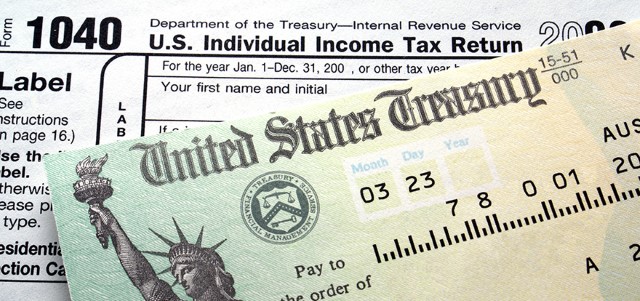6 Smart Ways to Use Your Tax Refund

Expecting a tax refund? While it can be tempting to rush out and spend that money, there are better uses for this cash that could help you improve your financial status in the long run.
If you’re one of those millions of Americans expecting a refund, here are six smart ways to put it to work:
1. Pay Down High-Interest Debt
One of the smartest things you can do with your refund is to pay down types of high-interest debt, including credit card bills.
By lowering your debt balances, you reduce the amount of interest you owe, a strategy that can help you save a potentially significant amount of money over time. If you have more than one loan, consider paying off the one with the highest interest rate first.
2. Enhance Your Savings
Your tax refund might help you sleep better at night if you use it to bulk up your savings. The first place you should stash it away? In your emergency fund, if it isn't already fully funded.
Experts typically recommend an emergency fund big enough to cover three to six months' worth of living expenses to cushion the blow of a job loss or another financial setback. You can start small to work your way up to that goal.
Luckily, the IRS makes it easy for taxpayers to save their refunds. By opting for direct deposit, you can deposit your refund, for free, in up to three U.S. financial accounts. By placing the funds into a savings account instead of a checking account, you’ll be less tempted to spend the funds.
Think of it this way: The more of your tax refund you save today, the less of a chance you'll end up needing to tap your credit cards or take on other unnecessary debt if you hit a rough patch in the future.
3. Fund Your Retirement Accounts
The "found money" you receive today could make a big difference in the years to come. Consider making an extra contribution to your Roth or traditional individual retirement account (IRA). Through the effect of compounding, you can earn returns on not only your original investment but also on any returns you’ve previously received, increasing the possibility that your refund could be worth many multiples more by the time you retire.
Remember the IRS's direct deposit option? You can choose to have some, or all, of your refund money sent directly to your IRA. If you don't already have an IRA, you might want to consider using your refund money to start one. The contribution limits for IRAs are reviewed annually by the IRS, so be sure to verify the current limits before choosing how much of your refund to put in the account.
Additionally, if your company offers a sponsored plan, figure out whether you're on track to save the max this year using FINRA's 401(k) Save the Max calculator. And if your firm offers matching contributions, your savings could be as much as doubled. Pay attention to limits, as contributions for 401(k)s are also adjusted yearly.
If you’re self-employed, you can also contribute to a Simplified Employee Pension (SEP) IRA.
4. Bulk Up College Funds for Loved Ones
Once you've taken care of more immediate financial concerns and your retirement, you might want to think about contributing to college savings for your children or grandchildren.
College savings vehicles, including 529 plans and Education Savings Accounts, offer potential tax benefits so long as the money’s used for qualified educational expenses.
Again, by using the effects of compounding, every dollar you save today reduces the amount of debt your loved ones will encounter in the future.
5. Invest in Yourself
If you've been dreaming of developing new skills or of getting a degree, this could be your opportunity. You might want to invest your tax refund in yourself by signing up for continuing education courses, advanced degree classes or a professional certification program.
The payoff might be more than just a higher paying job. An investment in yourself could lead to greater confidence, expanded opportunities and a stronger professional network.
6. Plan for Next Year
No matter how you use the cash from your refund this year, take some time to evaluate and adjust your withholdings to prevent a substantial refund next year. Sound crazy? A refund might seem great but, in reality, it means you overpaid on your taxes over the course of the year. A tax refund is often referred to as an "interest-free loan" to Uncle Sam. It’s money you might otherwise have used during the year to pay your bills, invest or reduce your debt. Instead, you paid that money to the government.
For many taxpayers, figuring out how much to pay in taxes throughout the year to avoid getting a refund or owing a large sum of money is a difficult task. Some people deliberately withhold too much from their paychecks, using this tactic as a forced savings plan. Many others, though, experience changes in their life that impact their tax status, whether that means getting married or divorced, having a child or changing jobs.
But if you can help it, you might be better off foregoing the refund and using the extra cash from each paycheck to invest or to pay down your debt throughout the year rather than letting the government hang on to your hard-earned cash interest-free.
Learn more about investing.



